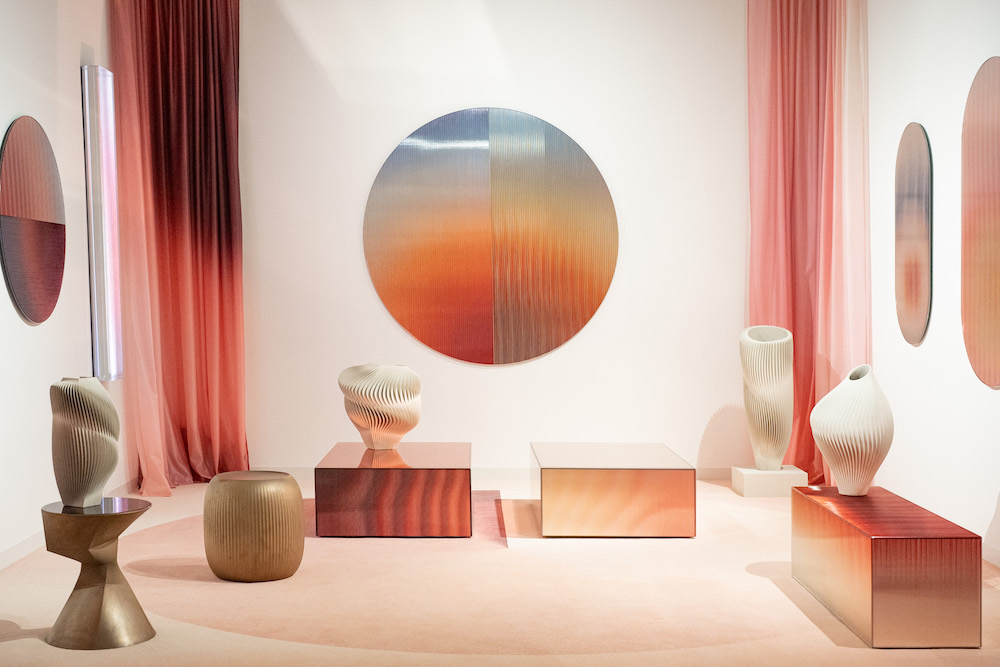Last Wednesday, in Ketchum, Idaho, artists, collectors, and local community leaders gathered at the Limelight Hotel Ketchum for the third iteration of “Works in Conversation,” presented by PAHC / studio (dot) lab. The talk, entitled “Theory vs. Practice: The New Meaning of Art Education,” featured artist Paula Crown, Director of the Artist Initiative at the San Francisco Museum of Modern Art (SFMOMA) Robin Clark, Artistic Director of the Sun Valley Center for the Arts (SVCA) Kristin Poole, artist Lisa Wood, and Deputy Director for Education at the Museum of Modern Art (MoMA) Wendy Woon, and was moderated by The Armory Show’s Executive Director Ben Genocchio.
The impetus for the conversation and gathering at the new Limelight (with locations in Aspen and soon to be Snowmass), which opened in Ketchum late last year, came from Crown, the artist behind PAHC / studio (dot) lab. The artist and her studio are behind the hotel’s collection—including works by Ann Hamilton, Mary Heilmann, Tara Donovan, Carmen Herrera, James Turrell, Raymond Pettibon, etc.—room design, and installations throughout the site.
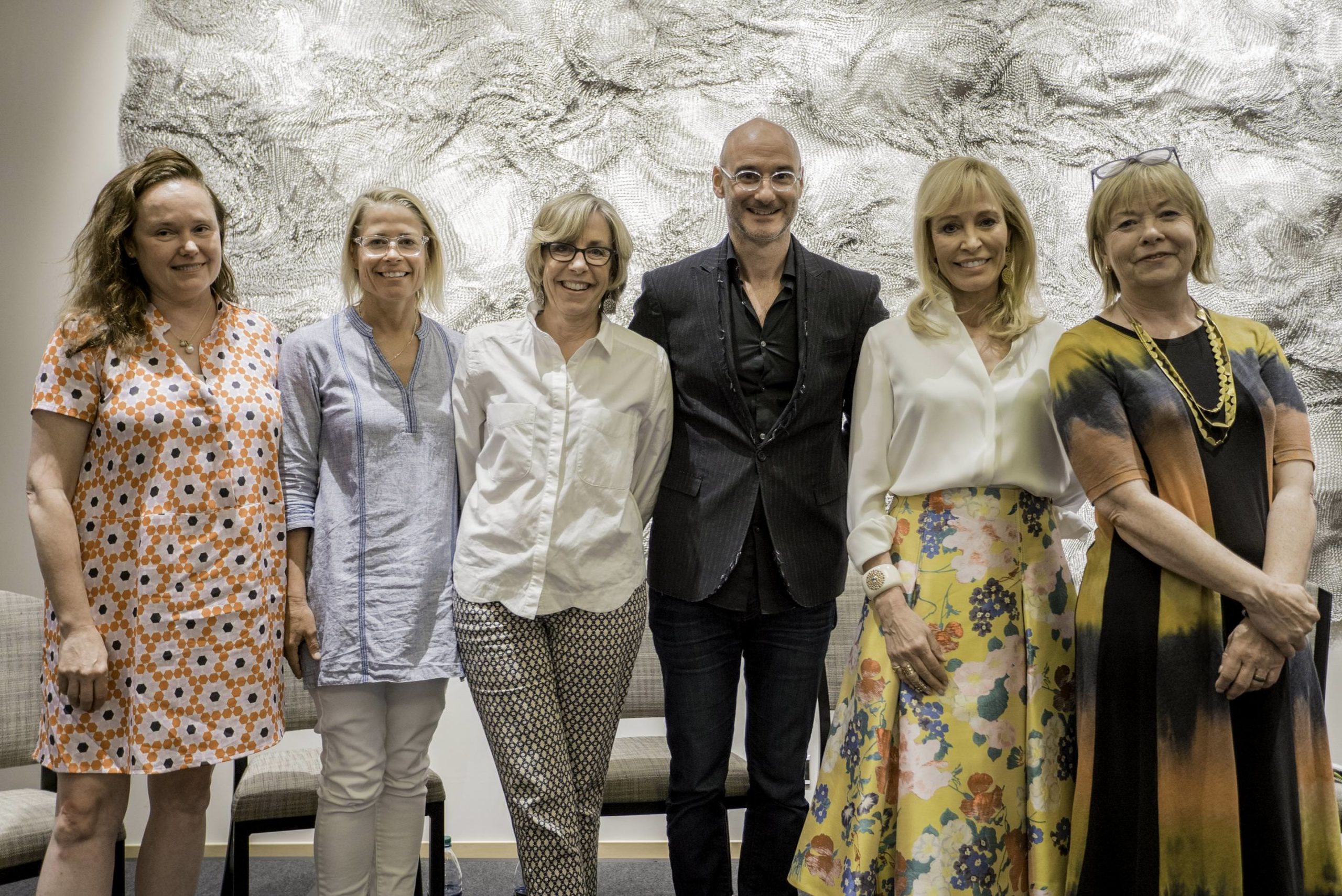
Photo courtesy of PAHC / studio (dot) lab.
Genocchio opened the discussion by asking each panelist about their introduction to the arts. For Crown, it was when her parents took her as a child to an adult level arts class thanks to her pension for drawing on household objects. For Woon, it was her mother and two “magical” aunts who lived in California and worked in arts education. Wood, a local photographer whose abstract works are featured throughout the Limelight Hotel Ketchum, connected to art through literature in college. For Poole, who attended the Cranbrook Academy of Art, it was her mother and the Detroit Institute of Arts. And Clark grew up in New Hampshire attending an arts oriented school, with many of her friends’ parents being artists.
When asked by Genocchio, “Is there something that’s different about the way the artist’s mind is wired?” Wood offered that exploration and being in a new environment, is the driving force behind her practice.
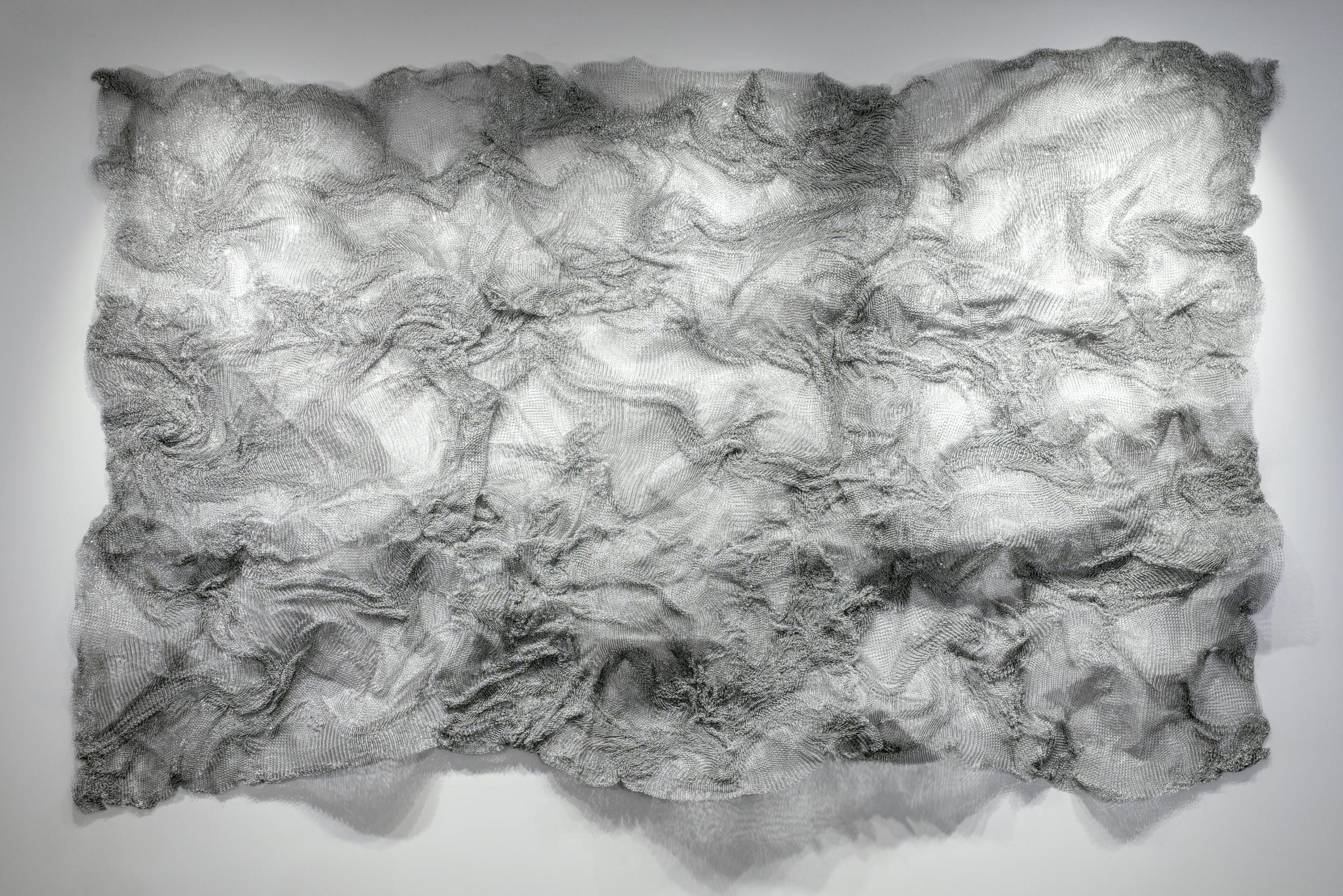
Paula Crown
Anemos 14(+)
2016
Stainless steel g-chain mesh and resin
108 x 144 inches
Courtesy of PAHC / studio (dot) lab
Crown, who is involved in MoMA’s Education Committee, wondered, “Why do we value the output of artists but we don’t value the process?” She said that seeing is our most important sense. We think in pictures and words, so being curious is a way of being generous to our environment and those around us. “Pay attention and honor what interests you,” she advised. That’s what artists do. And if we’re open to that, we must be open to failure, acknowledging that failure is good data from which we can learn and try again.
Woon, an artist and educator, expanded on the importance of being curious. In order to bring art and people together at MoMA, she and her team do qualitative visitor research on how people connect to art. She shared, “I see art as not the product, but the process.”
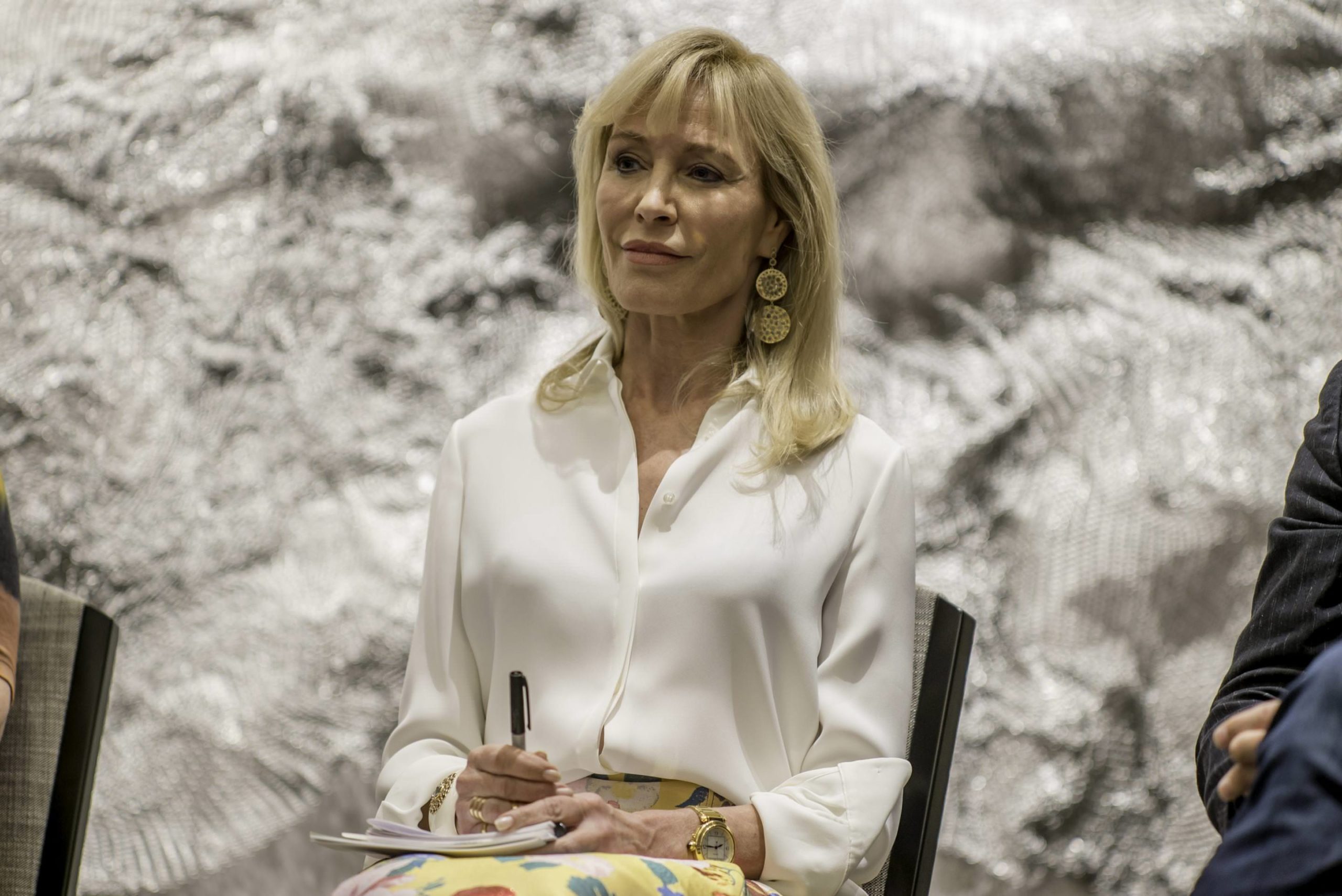
Paula Crown, photo courtesy of PAHC / studio (dot) lab.
Genocchio then asked Clark and Poole if museums and institutions are doing a better job of showing art today. “I actually think we are,” said Poole, noting that the definition of a museum has changed. “We are no longer waiting for you to come to us, we need to come to you. That’s a huge shift. We’re the activators of a community, if we’re doing our job right,” she said. “We need to get messy and bring in our community in whatever ways we can, and that includes all the community. That’s the challenge and that’s where we can do a better job.”
One way that institutions can better engage is via technology, as Clark pointed out. SFMOMA recently launched a text messaging service, “Send Me SFMOMA,” where users can text a word, phrase, image, or emoji, and be sent back a work from the museum’s collection. It has been wildly successful, reaching a peak of 70,000 messages an hour at one point. And while, as Clark pointed out, the benefits of the program are not yet known, it offers the possibility of making long-lasting connections between the public and the museum.
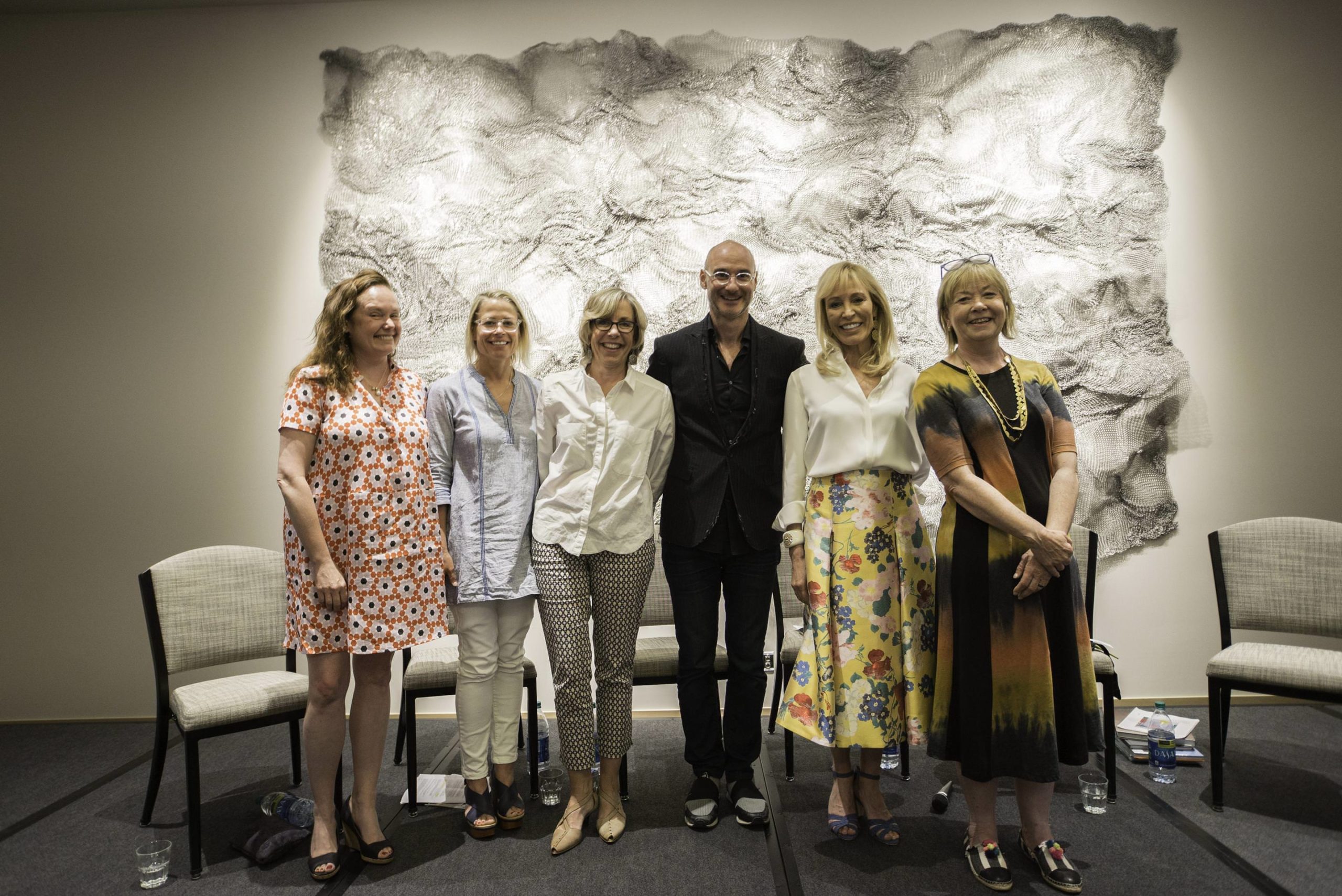
Photo courtesy of PAHC / studio (dot) lab.
Both Poole and Woon emphasized the notion of art as a catalyst, rather than the end or means to having a creative experience. Art is about finding a common ground, and the challenge is to facilitate that connection.
“I want to nourish that childlike creativity we all have,” said Crown, when asked about what is exciting her right now in the field of arts education. “The key for me is to give people space to make mistakes. It’s part of the process. This dialogue is important because then the museums are no longer these edifices, they are places of conference and learning,” she said.
An example of that was provided by Clark, who spoke of a program at SFMOMA that brought in medical students to study art to better converse with patients across cultures. The museum installed a gallery of works by artists responding to the AIDS crisis. Participants were asked to talk about what they saw, the material of the piece, and how it related to health concerns in their own community. Of around 30 students, only two had ever been to an art museum before. Clark shared that they left feeling empowered, confident, and able to communicate on a broader level.
Locally, Poole and the SVCA see the arts as a tool to connecting with the Ketchum and Sun Valley community. As a non-collecting institution, the SVCA is nimble and cross-disciplinary. At public and private schools, it sends trained art educators to work with core curriculum teachers to get students to learn through hands-on art projects. “There’s a way to use visual language and visual thinking to get people more critically learning. It’s not a passive learning, it’s an active learning,” said Poole.
The panel came to a close with questions from the audience—an impressive group that included collectors like Roselyne Swig and Ruth Bloom, gallerist Bill Griffin, the Wolfsonian-FIU‘s Jeri Wolfson, and Design Miami/’s Rodman Primack. The town’s interest in cultural engagement at the local level was apparent, and the excitement for the possibilities in art education palpable.






